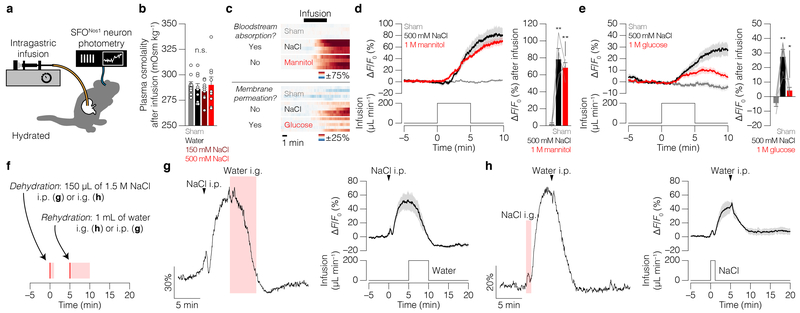Extended Data Figure 2. The GI→SFO osmosensory signal depends on fluid tonicity but not osmolyte identity.
Panels a,b show that i.g. infusion does not rapidly alter the state of the blood. a, Schematic. b, Plasma osmolality of samples collected during approximately 3–6 min after the start of the 5-min i.g. infusion (n = 9 mice per group, one-way ANOVA, Holm-Šídák correction). Panels c–e show that the GI→SFO osmosensory signal depends on fluid tonicity but not osmolyte identity. c, SFO neuron dynamics of individual mice in response to i.g. infusion of equiosmotic concentrations of NaCl, which is absorbed into the bloodstream from the GI tract, and mannitol, which is not absorbed (top; n = 4 mice). SFO neuron dynamics of a separate cohort of individual mice in response to i.g. infusion of equiosmotic concentrations of NaCl, which does not permeate cell membranes and has high tonicity, and glucose, which does permeate cell membranes and has low tonicity (bottom; n = 5 mice). d, Average SFO activity during i.g. infusion of NaCl or mannitol (left). Quantification (right; n = 4 mice, one-way ANOVA, Holm-Šídák correction). e, Average SFO activity during i.g. infusion of NaCl or glucose (left). Quantification (right; n = 5 mice, one-way ANOVA, Holm-Šídák correction). Panels f–h show that SFO neurons encode systemic and GI osmosensory signals additively rather than hierarchically. f, Schematic. g, Example (left) and average (right; n = 4 mice) SFO neuron dynamics during 1.5 M NaCl i.p. injection followed by water i.g. infusion. h, Example (left) and average (right; n = 3 mice) SFO neuron dynamics during 1.5 M NaCl i.g. infusion followed by water i.p. injection. Error bars represent mean ± s.e.m. Shaded areas in summary traces (d,e,g,h) represent mean ± s.e.m. and in example traces (g,h) represent i.g. infusion. *P < 0.05, **P < 0.01; n.s., not significant.

